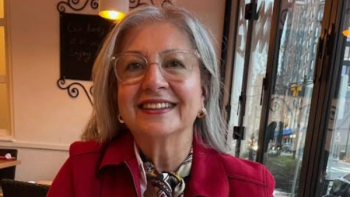
What to Expect in the Lung Cancer Clinic
Transcript:Mark A. Socinski, MD: Most of the regimens that we use to treat advanced lung cancer are administered as every-3 weeks regimens. For instance, for nonsquamous patients, the 2 typical combinations we use are either carboplatin with paclitaxel or carboplatin with pemetrexed plus or minus bevacizumab. These are drugs that are given once every 3 weeks, and this does not necessarily require a clinic visit in-between the 3 weeks, so they have a level of convenience that’s actually quite nice.
Now, when you’re in the clinic, depending upon the efficiency of the clinic, these regimens would typically take 5 to 6 hours to administer from the time you get there and have your blood checked—the doctors, or healthcare professionals, have to check you out and make sure it’s okay to go with chemotherapy. You have to have your labs checked. Someone has to order the chemotherapy; it just doesn’t appear. The pharmacist has to mix it up. The nurse has to administer the drug. So, by the time all of that’s done with these sorts of regimens, we’re talking, typically, about 5 or 6 hours.
Edward S. Kim, MD: We’ve now decided on treatment. Let’s, for example, say it’s going to be carboplatin/paclitaxel and Avastin. So, what happens now? We make sure we have your labs, which means your chemistries from your blood, your white blood cell count, and your red cell count. We will draw blood to make sure that we know what those levels are. We will then administer the drugs. You get those via an intravenous method. So, usually we either put in a line, which my nurse will talk about to you, or an IV. And usually you spend a few hours in infusion taking these drugs. They’re given once every 3 weeks, so we’ll repeat this process again in 3 weeks—blood work and then as long as the blood work looks good, we’ll continue with the therapy.
After we finish 2 cycles (two 3-week segments), we will repeat CT scans or imaging. And that’s when we take our first assessment to see if the tumor is shrinking, growing, or has stayed the same. Two of those answers we like. We like 1 of those answers better than the other, but we still accept 2 of those answers. The third one, the growing one, we don’t like so much. But it still can occur in some patients. We will then, as long as the tumor is the same size or is shrinking, do the exact same thing again. We would then move to cycle 3 and cycle 4 and repeat the imaging.
If everything looks good after 4 cycles (so that’s 4 x 3, that’s 12 weeks), we then assess whether it is appropriate to now go on to maintenance, which is just the single drug Avastin. Or if the tumor continues to shrink and the patient is tolerating it really well, then we decide if we should give cycle 5 and cycle 6 of the 3 drugs. That’s a decision point that’s made after 4 cycles.
My nurse will be here. A nurse should be helping you and can answer questions. We usually have a pharmacist and an ACP (advanced care provider), a nurse practitioner, or a PA (physician’s assistant). We also have navigators, or social workers, that can help. So there is a huge team involved when delivering your care—and that’s just in the clinic. When you go to the infusion room, there’s also a nurse or infusion specialist who’s able to help you there, as well as a pharmacist who’s mixing the drugs. So it’s a very large team. It can, again, be a little confusing on who to ask what question to. I would encourage you not to ask every question to every person who comes to you, but to be specific in where to direct those questions. Anyone will help you, but our team, here in the clinic, is the quarterback. That’s where a lot of these questions are relevant, and questions can be directed to any one of our team members here in the clinic as we make those decisions on how we’re proceeding forward with treatment and with what drugs.
Transcript Edited for Clarity





